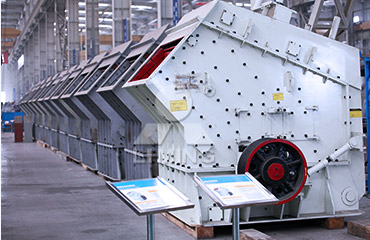Usage and Maintenance of Impact Crushers
December 4th 2024
Impact crushers are widely used in various industries, such as mining, construction, and recycling, due to their ability to crush materials into fine and uniform sizes. Understanding the proper usage and maintenance of these machines is crucial to ensure their longevity and efficiency.
Optimal Usage of Impact Crushers
- Material Selection
Impact crushers are ideal for processing medium-hard to soft materials, such as limestone, coal, and gypsum. Avoid using them for extremely hard materials like granite, as it may lead to excessive wear. - Feeding Parameters
Ensure the material fed into the crusher matches the machine’s capacity and size specifications. Overloading or introducing oversized materials can cause damage to the rotor and reduce efficiency. - Operational Speed
Maintaining the recommended rotor speed is vital for achieving the desired particle size and preventing unnecessary stress on the machine. - Integration with Production Lines
Combine the crusher with screens, conveyors, and other equipment to streamline operations and improve output quality.
Maintenance Guidelines
- Regular Inspections
Conduct routine checks of critical components such as the rotor, hammers, and impact plates. Look for signs of wear or damage and replace parts as necessary. - Lubrication
Proper lubrication of bearings and other moving parts ensures smooth operation and reduces friction-related wear. Use the recommended lubricants as specified in the manufacturer’s manual. - Cleaning and Clearing
Regularly remove dust, debris, and any blockages inside the crusher to prevent overheating and ensure efficient functioning. - Bolt Tightening
Vibrations during operation can loosen bolts and fasteners. Inspect and tighten them regularly to maintain structural integrity. - Monitoring Wear Patterns
Keep track of wear on hammers and impact plates. Rotating or flipping these parts can extend their lifespan before replacement is necessary.
Safety Measures During Maintenance
- Always turn off and lockout the power supply before performing any maintenance.
- Use appropriate safety gear, such as gloves and goggles, to protect against potential hazards.
- Follow the manufacturer’s maintenance schedule and guidelines to ensure proper care.
Benefits of Proper Usage and Maintenance
- Enhanced Efficiency: Well-maintained crushers deliver consistent performance and higher productivity.
- Reduced Downtime: Regular upkeep minimizes unexpected breakdowns, leading to uninterrupted operations.
- Cost Savings: Proper maintenance extends the machine’s lifespan and reduces repair costs.
- Improved Safety: Addressing potential issues early ensures a safer working environment for operators.
Conclusion
The effective usage and regular maintenance of impact crushers are essential for achieving optimal performance and reducing operational costs. By adhering to the recommended practices and safety measures, businesses can maximize the value of their investment and ensure the smooth functioning of their crushing operations.
Related News
- > Cone Crushers in Malaysia: Enhancing Efficiency in Mineral Processing and Construction
- > Impact Crusher Working Principle: A Simple Guide to How It Works
- > Durable 15-40t/h Roller Crusher for Efficient Material Processing
- > Gravel Impact Crusher for Concrete Aggregates: Enhancing Construction Efficiency
- > Vibrating Screens for Crushed Stone and Gravel Processing: Equipment for Crushing and Screening Aggregates
- > Hydraulic Cone Crusher in South Africa: Optimizing Performance for Mining and Construction
- > The Role of Impact Crushers in Iron Ore Mining
- > The Application of Cone Crushers in Iron Ore Crushing
Hot Product


Online




Message

